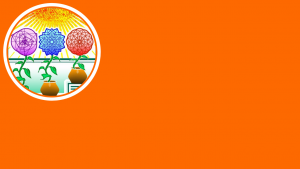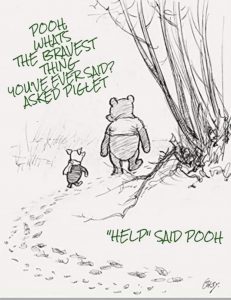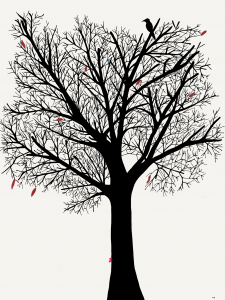I am very excited to write today’s post as I had the pleasure of once again attending the OAME math conference this year. The conference ran from Monday, May 17th and ends today Friday, May 2st. There were over 160 sessions to select from so it was hard to narrow it down to three per evening. I was offered a volunteer position with OAME to assist with moderating 3-4 sessions. This gave me access to the entire conference and as usual, this year’s conference did not disappoint. I would love to tell you about the exciting sessions I went to and some details about them. I also attached resources that were made publicly available and some ways I have already used my learning inside my grade seven math classroom.
Session Name: Supporting the new Elementary Math Curriculum: Educator Learning Modules
Presenters: Moses Velasco and Chantal Fournier
Summary of my learning: Moses and Chantal shared their presentation about ELMs. They shared a great resource as well! This presentation was geared towards more of a math coach audience which as I am not was not able to connect with much of their content. The ELMs were from 2017 and I know there were some questions about making new ones with the new math curriculum. Moses let the audience know that they will be coming out soon. The examples that we saw on the website were great! Feel free to explore their resource.
Resources: https://sites.google.com/view/operation-sense/home
———————————————-
Session Name: Assessment that Moves
Presenter: Jordan Rappaport
Summary of my learning: Jordan was a gifted speaker and he had so many important things to share. Many of them I implemented in my class the very next day. Jordan spoke a lot about virtues in math:
- Being creative
- Being a thinker
- Curiosity
- Perseverance
- Willingness to take risks
- Ability to collaborate
Jordan shared that these virtues are important to people who hire mathematicians and essential in every math classroom. We also looked at a forward thinking rubric which had three boxes and a large arrow on top. He talked about using this so students can see where they are and where they should move towards. For the topic of collaboration, on the left column on the rubric, you would put terms like excluding, not being supportive, etc. and on the far right you would put the expected behaviours (opposite of the left side). You would then circle the place where the student was at. Jordan mentioned that building a rubric should be a collaborative process and he starts jamboards and shares them with his students. They generate ideas together when talking about a specific math virtue, what you should see and not see.
How I used this in the classroom this week: The day after hearing from Jordan, I posted the virtues on my slide and asked students to share what their best math virtue is. This allowed us to engage in conversations about why they take risks, why others may not, etc. This conversation was so meaningful and I loved hearing from my students.
Resources:
https://buildingthinkingclassrooms.com/
https://www.peterliljedahl.com/
http://fractiontalks.com/
———————————————-
Session Name: Designing Classroom Explorations that Engage All Students
Presenter: Gail Burrill
Summary of my learning: During this session, Gail spoke about many exciting topics. Gail shared that in her math classroom, she has her students complete various math tasks such as: book reports, research reports (math in art, etc.), write stories from graphs and many more. This connects math to many other subjects and is meaningful for students. Some other key takeaways included:
- Data driven tasks are important in the classroom
- Connecting math to student’s lives
- Gail gave an excellent example where students had to find the problem with Fred VanVleet from the Raptors as his shooting percentage was in a rut. They had to solve if there was a rut or not and look at percentages with his shooting statistics.
- Following instructions doesn’t mean your students have learned anything
- Turning procedures into problems because then students will want to solve them and remember them
- Vertical non-permanent surfaces
- Visibly random groups
- Comments before grades; feedback should be for thinking
Gail also mentioned a great resource where you can visit https://censusatschool.ca/ and have students answer: What do you notice? What do you wonder? These real life statistics engage her students for the first fifteen students of her class and she looks at real life scenarios. Gail also left us with some things to think about:
- How much time do your students spend..
- in silence?
- talking to peers?
- listening?
- presenting?
Resources: https://censusatschool.ca/
———————————————-
Session Name: Building Math Residue with Lessons That Stick
Presenter: Graham Fletcher
Summary of my learning: Graham shared many ideas that help students engage in explorations and lessons that really make students wonder, what is the answer to that question? I loved this idea from Graham:
- Estimation Waterfall: asking students to wait until they hit enter so that they are not just copying the student who always gets it “right”
Of course, the focus of the session was what makes a good task? Here were Graham’s steps:
- Simple: Is it accessible? Avoid language due to any language barriers
- Unexpected: Does it fire up the guessing machine? Do students actually want to know the answer?
- Concrete: Do your students have any prior knowledge to connect to?
- Credible: What validates the math?
- Emotional: Does it create an ah-ha moment?
- Stories: How will the math story be told?
Graham also mentioned the following ideas which are important to know and to understand:
- Anyone can be good at math
- Listening to a student’s thinking is more important than the answer
- Graham showed a video of him working with a student and he was so patient, waiting to hear the student get the answer and listening to their process
- Right answers should only matter at the end of a unit (assessment/test). The journey along the way is for making mistakes and for building understanding
- A good math question makes you excited for the answer
- Teachers shouldn’t jump on their students when they see a wrong answer, they should question them and wait for them to have that ah-ha moment
How I used this in the classroom this week: The day after hearing from Graham, I asked my students join a jamboard and I posed the above statements to them. I had them disagree or agree and if they wanted, they could share their reasoning on the mic. Students had such incredible things to say about all of the statements and we even got one anxious student to admit that making mistakes along the way is okay! A huge breakthrough for this student.
Resources: https://gfletchy.com/Be sure to check out the tab “3-Act tasks” for some engaging lessons that stick!
————————————————–
Session Name: Math, Social Justice and Actions
Presenter: Robert Berry
Summary of my learning: Robert Berry brought up incredible conversations that need to be had in our math classrooms. Robert shared a provocation for us: Who are our essential workers? What do you notice, wonder and how does it impact your community? Robert shared a lot of insight on how to create your own social justice math lesson:
- Learn about relevant social injustices
- Identify the math
- Establish your goals
- Determine how you will assess your goals
- Create a social justice question for the lesson
- Make student resources
- Plan for reflection/action
There should be conversations about connecting math with students cultural and community histories. This was a great session and I was so engaged in his presentation, I did not take many notes!
Resources: https://padlet.com/rqb3e/sjmathresources Attached are incredible social justice mathematics resources
————————————————–
Session Name: Some of my Favourite Problems
Presenter: Mike Eden
Summary of my learning: Mike is from the University of Waterloo and he shared many engaging math problems from various contests and from challenging math lessons. He asked people in the chat to share their answers and we looked at many ways to solve these challenging problems. I am sure you are all familiar with “Problem of the Week” from the University of Waterloo, well Mike took us further with these incredible problems!
Resources: http://: https://www.cemc.uwaterloo.ca/ https://www.cemc.uwaterloo.ca/contests/past_contests.html
—————————————————
Session Name: Slow Reveal Graphs as Social Justice Provocations
Presenters: Kyle Pindar and Jennifer Fannin
Summary of my learning: This was such an engaging session that used the website https://trends.google.com/trends/ to design slow reveal graphs. The focus of the lessons are asking the questions these key questions: What? So what? Now what? Also, what do you notice? What do you wonder? Slow reveal graphs are innocently framed as hard hitting social justice questions. Kyle explained how to make these slow reveal provocations using these steps:
- https://trends.google.com/trends/?geo=CA Make sure you are using the Canadian trends (setting on top right should say “Canada”
- Download the image (graph) you want to use
- Open up a blank google sheet
- Upload the download and re-size the columns
- Delete the top two lines
- Create slide show
Then, show your students these graphs, slowly revealing new features on the graph such as: the actual data, x axis information, y axis information and then eventually, the title (trend). Kyle and Jennifer discussed generating expected students responses so that you can be prepared to have these discussions as a class. They had great examples, specifically a graph showing the googling of “BLM” and you could see the spike on the day that George Floyd was murdered. Both presenters discussed how you would have that conversation with the class of what made these search results spike up in May of 2020? These are such great ways to have social justice discussions in class!
Resources: https://trends.google.com/trends/?geo=CA https://www.statcan.gc.ca/eng/start
Overall, I am so grateful for the opportunity that was this year’s OAME Math Conference. I wish I had been able to attend/moderate more sessions but as an OAME volunteer, I have the ability to listen to recorded sessions I could not attend. I will listen to some over the next few weeks and post anything else I gather. I hope this post provides a snapshot of such incredible math presentations and all of their wisdom that they wished to pass on to math educators! I know it is late in the year to take in this much incredible math information, but this post will be here to refresh your memory after a well-rested and well-deserved summer vacation!
If you wish to learn more about OAME or how to attend the conference next year, visit their website: https://oame.on.ca/main/index.php




 For me as a kid, there was no better feeling than opening up a new box of 64 Crayola crayons. The big box with the flip top lid and the sharpener on the side. I can remember agonizing over which colour to pick first and being so thrilled by the perfection of the colour palette in neat rows in that box. I loved to draw and colour. I could do it for hours never lifting my attention from the page. In adulthood, I abandoned doing art for pleasure. It seemed silly for me to sit around and draw or paint for no real reason. I felt I should be doing something productive. A few years ago I began to create art again and realized how much I had missed it and how much joy it brought to my life. I create digital art now, which isn’t quite the same rush as opening a box of crayons but it is easier to share with others-like the picture above. I have recently learned about the health and wellness benefits of creating. Creating is rejuvenating, it is rest and it is soul food.
For me as a kid, there was no better feeling than opening up a new box of 64 Crayola crayons. The big box with the flip top lid and the sharpener on the side. I can remember agonizing over which colour to pick first and being so thrilled by the perfection of the colour palette in neat rows in that box. I loved to draw and colour. I could do it for hours never lifting my attention from the page. In adulthood, I abandoned doing art for pleasure. It seemed silly for me to sit around and draw or paint for no real reason. I felt I should be doing something productive. A few years ago I began to create art again and realized how much I had missed it and how much joy it brought to my life. I create digital art now, which isn’t quite the same rush as opening a box of crayons but it is easier to share with others-like the picture above. I have recently learned about the health and wellness benefits of creating. Creating is rejuvenating, it is rest and it is soul food.